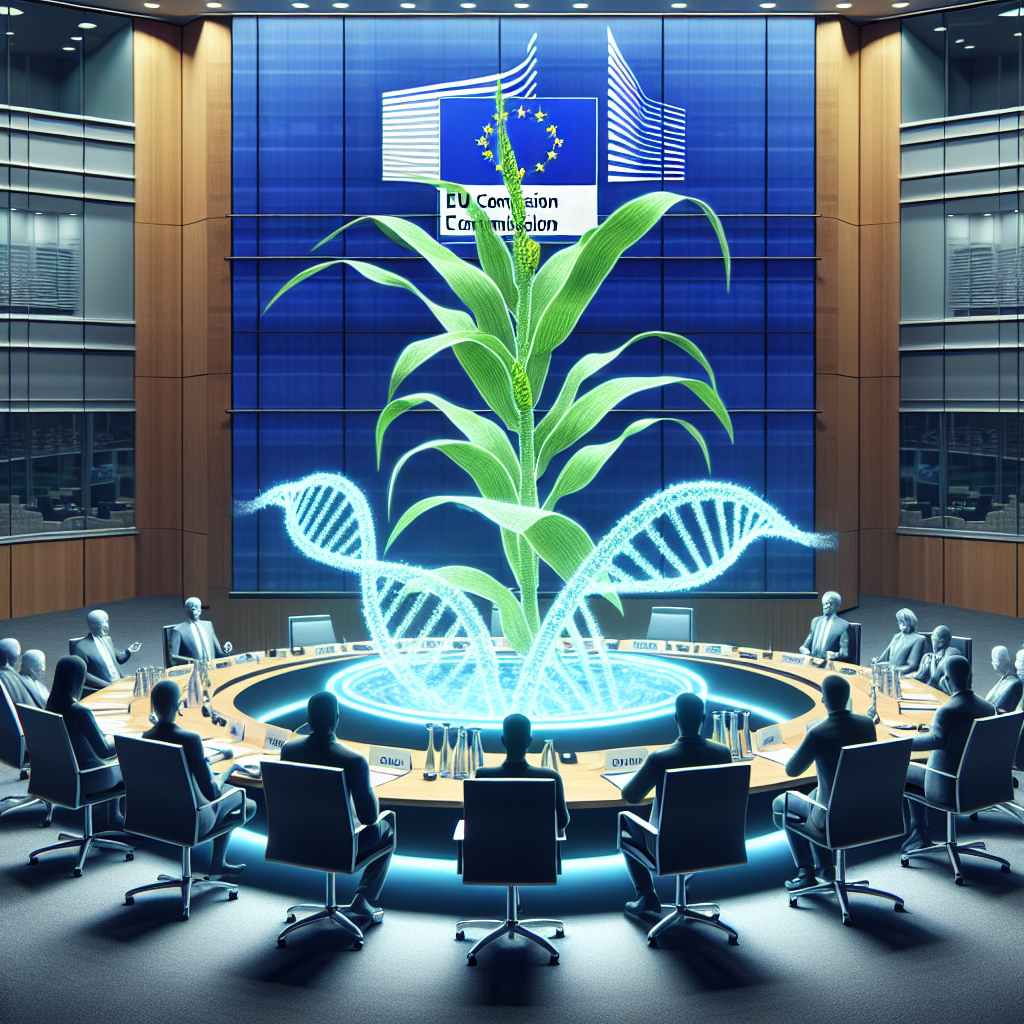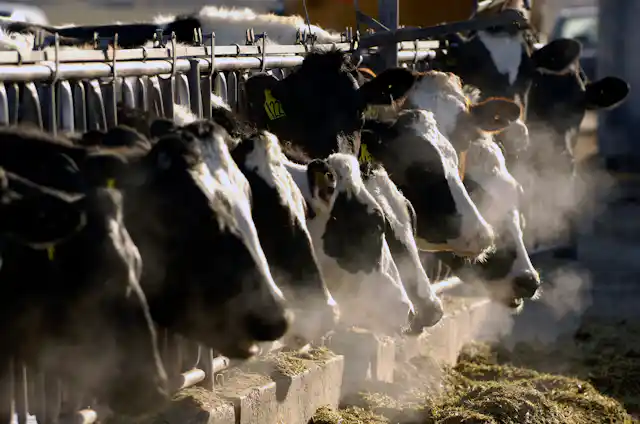The EU has approved genetically modified maize for food and feed use for the next 10 years. What does this mean for health and safety?

On July 2, the European Commission authorized two genetically modified maize crops for food and animal feed, and another maize crop authorization was renewed. These decisions, valid for ten years, allow the import of these crops under strict regulations, maintaining high standards of human and animal health and environmental safety. With rigorous safety standards and the EU’s meticulous labeling and traceability rules, dairy farmers can confidently introduce these genetically modified maize products into their feed regimen. This development promises to enhance feed efficiency and ensure a steady supply chain, mitigating risks related to crop failures and market fluctuations.
A Delicate Balance: EU’s Rigorous but Cautious Stance on GMOs
The European Union takes a comprehensive and scientific approach to regulating genetically modified organisms (GMOs), ensuring rigorous safety assessments before market introduction. This regulatory framework, which aims to protect human and animal health and the environment, is rooted in an array of directives, regulations, and decisions. Public debate and political considerations have historically shaped this process, making the path to authorization meticulous and contentious.
Regulation (EC) No 1829/2003 on genetically modified food and feed establishes the GMO assessment and authorization procedure alongside Directive 2001/18/EC detailing environmental risk assessments. Entities seeking approval must submit a detailed dossier to the European Food Safety Authority (EFSA), which conducts a thorough scientific evaluation to assess safety impacts. A favorable EFSA opinion leads to further scrutiny by the European Commission and member states in the Standing Committee on Plants, Animals, Food, and Feed.
Previous authorizations, like maize MON 810 and soybean MON 40-3-2, illustrate the EU’s stringent processes, including extensive risk assessments and consumer consultations. Strict labeling and traceability rules ensure transparency and consumer awareness of GMO product origins and safety.
The authorization process, however, is not free from political dynamics. Member states’ diverse views on GMOs can influence outcomes, often leaving the European Commission to decide when a qualified majority is not reached, as seen in the recent approval of two new genetically modified maize crops and the renewal of another.
Strategic Approvals Amidst Diverse Opinions: A Deep Dive into the EU Commission’s Recent GMO Decisions
The European Commission recently authorized two genetically modified maize crops: MON 87427 × MON 89034 × 1507 × MON 87411 × 59122 and 5307 × GA21. Additionally, they renewed the authorization for maize MON 810, a variant already deemed safe. These approvals are strictly for importation of food and animal feed, prohibiting cultivation in the EU.
The European Food Safety Authority (EFSA) exhaustively assessed each maize variant’s safety, covering impacts on human and animal health and the environment. The EFSA’s favorable conclusion confirms that these genetically modified products are as safe as conventional maize.
Products from these maize crops will comply with the EU’s stringent labeling and traceability regulations, ensuring transparency and consumer information. The Commission’s decision was necessary after Member States failed to reach a qualified majority in the Standing and Appeal Committees, reflecting procedural requirements and a commitment to safety and transparency.
E FSA’s Crucial Role: The Pillar of Scientific Rigor and Safety in GMO Regulation
The European Food Safety Authority (EFSA) is crucial in regulating the EU’s genetically modified organisms (GMOs). As the scientific authority on food safety, EFSA conducts a rigorous evaluation process for GMOs, assessing health risks, environmental impacts, and overall safety. This involves a detailed review of scientific data submitted by applicants, including molecular, toxicological, and allergenicity studies. Independent experts examine this data, often requesting further studies to resolve uncertainties.
EFSA’s scientific opinion, formulated after exhaustive evaluation, forms the foundation for the European Commission and member states’ regulatory decisions. For the genetically modified maize in question, EFSA concluded that these crops are as safe as conventional varieties based on comparative analysis. This positive assessment confirms that GM maize meets the EU’s stringent safety standards, ensuring the protection of public health and the environment.
From Deadlock to Decision: The EU Commission’s Role in Streamlining GMO Authorizations
The European Commission must make final decisions on GMO authorizations whenever the Member States fail to reach a qualified majority during both the Standing Committee and the Appeal Committee sessions. This obligation prevents regulatory stagnation and ensures food and feed safety decisions are made promptly. The authorization process for genetically modified maize begins with a comprehensive assessment by the European Food Safety Authority (EFSA). EFSA’s evaluation considers the impact on human and animal health and the environment. Once EFSA issues a positive scientific opinion, the proposal goes to the Standing Committee. If this committee fails to decide, the Appeal Committee reviews it next. Should the Appeal Committee also reach an impasse, the European Commission must make the final call. This structured approach ensures a scientifically sound and democratically accountable process.
Navigating Innovation and Regulation: The EU’s Strategic Stance on GMO Maize Imports
The authorization of genetically modified maize for food and animal feed within the EU highlights a significant intersection between innovation and caution, with broad implications for the industry. By permitting these imports, the EU Commission enhances production efficiency and resource management. Resiliently against pests and climate adversities, these crops promise a stable supply chain, potentially lowering costs for consumers and farmers. However, despite the comprehensive EFSA assessment, public skepticism toward GMOs persists in many Member States. This skepticism influences market dynamics, potentially increasing demand for non-GMO products and emphasizing the need for transparent labeling and strict traceability. The industry must balance the economic benefits of GMO imports with maintaining consumer trust. Additionally, the EU’s stringent labeling and traceability rules require significant compliance investments, which may disproportionately affect smaller businesses. These complexities reflect a narrative of progress tempered by caution, illustrating the delicate balance of innovation, public opinion, and regulatory demands.
Transparency and Accountability: The EU’s Rigorous Labeling and Traceability System for GMO Products
The European Union’s strict labeling and traceability rules for genetically modified crops ensure transparency and consumer awareness. Each product is clearly labeled, allowing consumers to make informed choices. Additionally, the EU mandates comprehensive traceability from farm to final product, involving extensive documentation at every supply chain stage. This system enables precise tracking of GMO ingredients, facilitating rapid responses to any health or environmental concerns. These measures uphold the EU’s commitment to safety and consumer confidence in the food supply chain.
The Bottom Line
At its core, the European Commission’s authorization of genetically modified maize for food and animal feed balances technological advancement with stringent safety measures. Limited to importation, this move underscores the EU’s commitment to food safety and environmental protection. The European Food Safety Authority’s (EFSA) comprehensive assessment ensures these GM maize varieties are as safe as their conventional counterparts, with authorizations valid for the next decade. The EU offers transparency and accountability by enforcing strict labeling and traceability rules. This decision could enhance options in the food and feed sectors, driving innovation and efficiency in animal farming. Embracing regulated GM maize use could improve feed quality, animal health, and productivity, working towards a sustainable and advanced agricultural framework where safety and innovation coexist.
Key Takeaways:
- The authorisations for genetically modified maize are valid for a period of 10 years.
- Approved maize can be imported for food and animal feed usage but cannot be cultivated within the EU.
- The European Food Safety Authority (EFSA) has conducted comprehensive assessments and confirmed the safety of these genetically modified maize.
- Products derived from these genetically modified crops will adhere to the EU’s stringent labeling and traceability regulations.
- The European Commission made these authorisations legally mandatory due to the absence of a qualified majority decision from Member States.
Summary:
The European Commission has authorized two genetically modified maize crops for food and animal feed, valid for ten years, under strict regulations to maintain high standards of human and animal health and environmental safety. This allows dairy farmers to introduce these products into their feed regimen, enhancing feed efficiency and ensuring a steady supply chain. The EU takes a comprehensive and scientific approach to regulating genetically modified organisms (GMOs), ensuring rigorous safety assessments before market introduction. Entities seeking approval must submit a detailed dossier to the European Food Safety Authority (EFSA), which conducts a thorough scientific evaluation to assess safety impacts. A favorable EFSA opinion leads to further scrutiny by the European Commission and member states in the Standing Committee on Plants, Animals, Food, and Feed. Previous authorizations, like maize MON 810 and soybean MON 40-3-2, demonstrate the EU’s stringent processes, including extensive risk assessments and consumer consultations.












